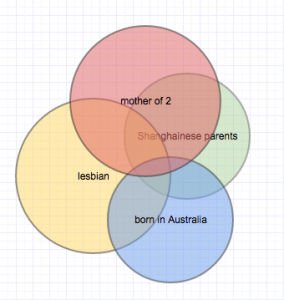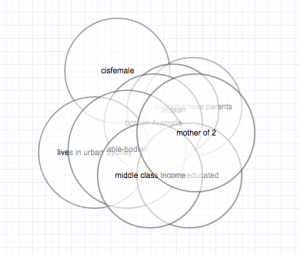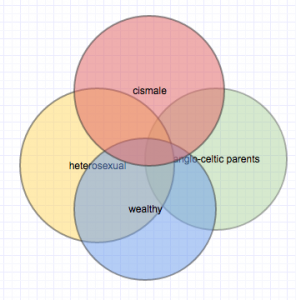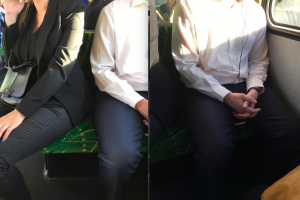Ah, another post which is really a bunch of facebook comments masquerading as coherent prose.
A friend linked up Gay Alcorn’s Guardian post ‘Helen Garner’s The First Stone is outdated. But her questions about sexual harassment aren’t’ the other day. I was flabbergasted by the piece. It made me incoherently angry. I literally could not write or talk about it.
I wrote a furious comment, but then retracted.
A few days later, I found a way in, when a man asked a useful question.
Please, first read the article above, then read on.
I began with this response:
Nope nope nope nope nope.
Which escalated to:
I think this Alcorn article is bullshit too. I’m so angry I have to step away from the computer.
But my way in came in the form of a specific discussion about a ‘continuum of harm’. Garner and Alcorn argue that a grope is less important than a ‘rape’. They argue that there’s a continuum of harm/seriousness, and neither really understands why women don’t just ‘deal’ with offenders in less serious cases. This made me very very angry. It’s an attitude profoundly lacking in empathy, but it also suggests to me that this sort of woman is enabling and participating in rape culture by dismissing claims about the ‘severity’ of an offence.
This is what I said next:
I actually don’t buy the continuum of seriousness model, where we have ‘totally not a big deal’ at one end, and ‘horrible violence’ at the other. It simply doesn’t work in practice.
In my experience working on s.h. and assault within a community over the past couple of years, it’s the relationship between incidents and behaviour that is significant. So a whole heap of ‘minor’ things all add up, within the context of patriarchy, to a pattern of exploitation and abuse. It’s very important to recognise these ‘small’ things as part of character type, so that you can predict what will happen next.
So I like to use a ‘spectrum’ of behaviour, where it is the connections between actions that are important.
I think… no, I _know_ that dismissing something like a ‘boob grope’ as inconsequential is a way of dismissing women’s concerns, and making them question their own instincts.
At any rate, should we wait til a man violently rapes a woman, or watch for patterns of behaviour and intervene well before that point?
Garner and Alcorn seem to be suggesting the former, I argue – angrily – for the latter. In fact, I think that Alcorn and Garner’s attitudes are dangerous and betray a profound inexperience with practicalities of dealing with s.h. and assault in real communities with real people. The theory of assault is nothing like the realities of dealing with it in real settings, with real people.
Me, when I see the pattern develop, I step in. I ban men who are potential trouble, because I am not fucking waiting til they do something ‘serious’ enough to warrant a police report. And I devote a lot of my class time to teaching men and women how to identify inappropriate behaviour, and how to respond to it.
This is the deal: women under-report assault and harassment. Men don’t report it. Women question all their instincts. Offenders train women to question themselves and downplay the seriousness of offences.
Garner completely fails to see how her demanding to know all about an event, and to have access to all the details is about her presumption of privilege. Basically, the right to disclose or not to disclose information about assaults and harassment is a key – central – most important! – part of responding to reports.
In my work, we have found that protecting anonymity is SO IMPORTANT. Because women who report, and women who act as agents reporting for survivors, are threatened – physically, legally, financially, emotionally. Within my dance community we’ve had to develop complex networks of relationships to make it possible for women to make reports anonymously. Garner’s coming into a situation like that, behaving the way she did, endangers women.
Reporting to the police? I fucking laugh. That’s far too dangerous and public for almost all the women I know who are reporting assaults.
Garner can fuck off.
I’m getting so angry writing about this, I have to stop. It’s seriously triggering my own vicarious trauma from working on these issues.
Garner, Acorn, and their opinions are fucking bullshit.
Someone then asked:
What’s the difference between a continuum and a spectrum of transgression?
And this is where I really go to town.
A continuum ranges from A to E in a straight line, suggesting A leads to B leads to C leads to D leads to E in gradually increasing severity.
A spectrum thinks in at least 2 dimensions – imagine a circular field, with lots of points all across that field. Instead of progressing in a straight line, offenders commit numerous offences and do many things that in themselves seem ‘unimportant’ or less ‘severe’, but taken as a whole network, add up to a more complex understanding of sexual assault and harassment behaviour.
It’s very very important to note that most offenders defend things like a breast grope or a very tight hand hold, or repeated invitations on dates, or persistent facebook messages, or standing too close, or interrupting women, or not using their proper titles as ‘small’ things. They often admit to doing these things, apologise profusely, and profess ignorance. They target younger, less experienced, less confident, less ‘visible’ women and girls. Women and girls less likely to report and less likely to believe their own instincts.
Taken one by one, each of these is ‘small’. It’s the relationship between all of them, and the repeating, ongoing ‘snow’ of actions that add up to important character profiles.
Most women actually tend to dismiss all these individual things as ‘unimportant’. More significantly, they may not even recognise that men are doing these things to them – eg a woman might feel ‘uncomfortable’ talking to Mr X, but not realise it’s because he’s standing too close, touching her ‘accidentally’, making a lot of eye contact, asking for too much personal information, choosing to speak to her in smaller rooms with no windows, etc etc etc.
It’s easy to apologise for a ‘small’ thing: “Oh, sorry! I didn’t realise! I’ll never do it again. I’m so sorry. Is it ok? Do you feel ok? Let me make it up to you.”
So we have a second important point: women are trained to doubt their very good instincts, men are trained to take the assertive role in these interactions.
A third point: women are trained not to notice or give weight to these many ‘small’ actions/offences.
A fourth point: women are trained to prioritise politeness, male comfort, and avoiding social awkwardness above their own discomfort. So they won’t move away, let alone speak up or ask a man to stop.
A fifth point: women and men lack a language for talking about these minor things, let alone major things.
Women are discouraged from using precise terms to talk about their own bodies: vulva, breast, bottom, stomach, small of the back. This means when they try to articulate where they were touched, they are imprecise: “He touched me down there” rather than “He brushed his finger tips across my vulva”; or “He boob swiped me,” rather than “He trailed his whole hand across my left breast as I turned away from him.” This social awkwardness combined with lack of _words_ makes it difficult for women to explain why they felt uncomfortable, why it hurt, why they didn’t want him to do these things. So when they report these ‘small’ things, they blush, tremble, stutter, hesitate. All signs that suggest ‘fabrication’ or ‘dishonesty’ if you’re looking for a lie.
A sixth point: offenders are really fucking good at hiding what they do in plain sight. I’ve stood and watched a man holding a woman in his arms while dancing, knowing he was groping her, but not being able to see it. I had to trust the woman’s report that he held her too tight, wouldn’t let her go, squeezed her fingers, pressed her groin against his leg. So ‘minor’ things in combination are easy to hide, and also work in concert to make a woman a) doubt herself, b) feel utterly trapped, c) make it impossible for her to report. What does she report? “He touched my hand in passing that one time? He sent me a lot of fb messages?”
A seventh point: other men are discouraged from calling men out on their behaviour, especially when it’s smaller stuff: “Lighten up, mate, it’s just a joke.” They’re trained to dominate space, and to prioritise their own feelings. So they don’t ‘see’ when a woman is trying to get away from a man in a public space in a non-confrontational way.
And, finally, I have seen that offenders invest a lot of time in all this ‘small’ stuff, training women to be quiet, isolating them from friends and help. And then, they escalate. They most commonly seen to escalate to becoming a ‘boyfriend’ who may not actually declare the relationship, but insist it’s casual or just for fun. And within that relationship they often escalate the violence of sexual encounters, and use a lot more controlling, gaslighting, and isolation techniques.
All this is why it’s super important to remember that rape is something that usually happens in the home, domestic or work space, by men women know well.
When we position rape as ‘violent attack on the street by a stranger’, it’s inexplicable (what was she wearing? why did this happen?).
But rape isn’t a bear attack or an earthquake. It’s not an inexplicable natural disaster. It’s often a very carefully planned and executed act of control, and just one expression of a whole continuum of control and exploitation.
So when we want to ‘look’ for sexual assault and harassment, it’s not useful to ‘look’ for the most ‘extreme’ incidents (which are usually defined in terms of phallic power, often literally in terms of vaginal penetration). If we want to find (and stamp out) sexual assault and harassment, we need to look for the ‘little things’, and then the relationships between these little things.|
This is how it’s essential to consider rape and harassment within the context of patriarchy. Everything about that story in the First Stone establishes this as a serious example of sexual harassment. If I was investigating that incident, I’d look for other, non-sexual(ised) incidents of his exploitative and controlling behaviour. Did he use women’s real titles? Did he take them to dinner a lot, or pay for a lot of drinks? Did he only hold meetings in his own office? Did he fail to pursue delayed pay or conditions for employees? Did he ask people to work late?
And so on.
I also need to add that I didn’t really understand how all this worked until I worked on it my dance community myself. I started seeing clear patterns in women’s reports and men’s behaviour. There were a lot of things that I couldn’t articulate or pin down about what made something ‘dodgy’. Luckily dance gives me a good vocab for talking about how to touch someone. But still, it was super difficult, and I still feel like I’m not quite there. I’m missing something. Most telling, I find my own empathy for women reporting assaults, and my own vicarious trauma change the way I think about and respond to reports.
I just don’t think that Alcorn and Garner had or have this understanding of the practical experiences of working on these issues. Too much office time, not enough observation and listening time.
Of course, if you’re reading along as a dancer, and as someone who’s read my other posts, you’ll realise that this is why I get so niggeldy about gender specific language in classes, about the types of photos of dancers we see at events, and whether the lead or the follow is listed first in competition couple announcements.
The ‘continuum of harm’ model is too simple. It suggests only two options: bad or not bad. Which is a) intellectually dishonest, and b) actively disempowering women and survivors of assault. It forces them to decide, ‘Was I raped/harassed or not?’ when the question should be ‘Is that man’s behaviour threatening others?’






